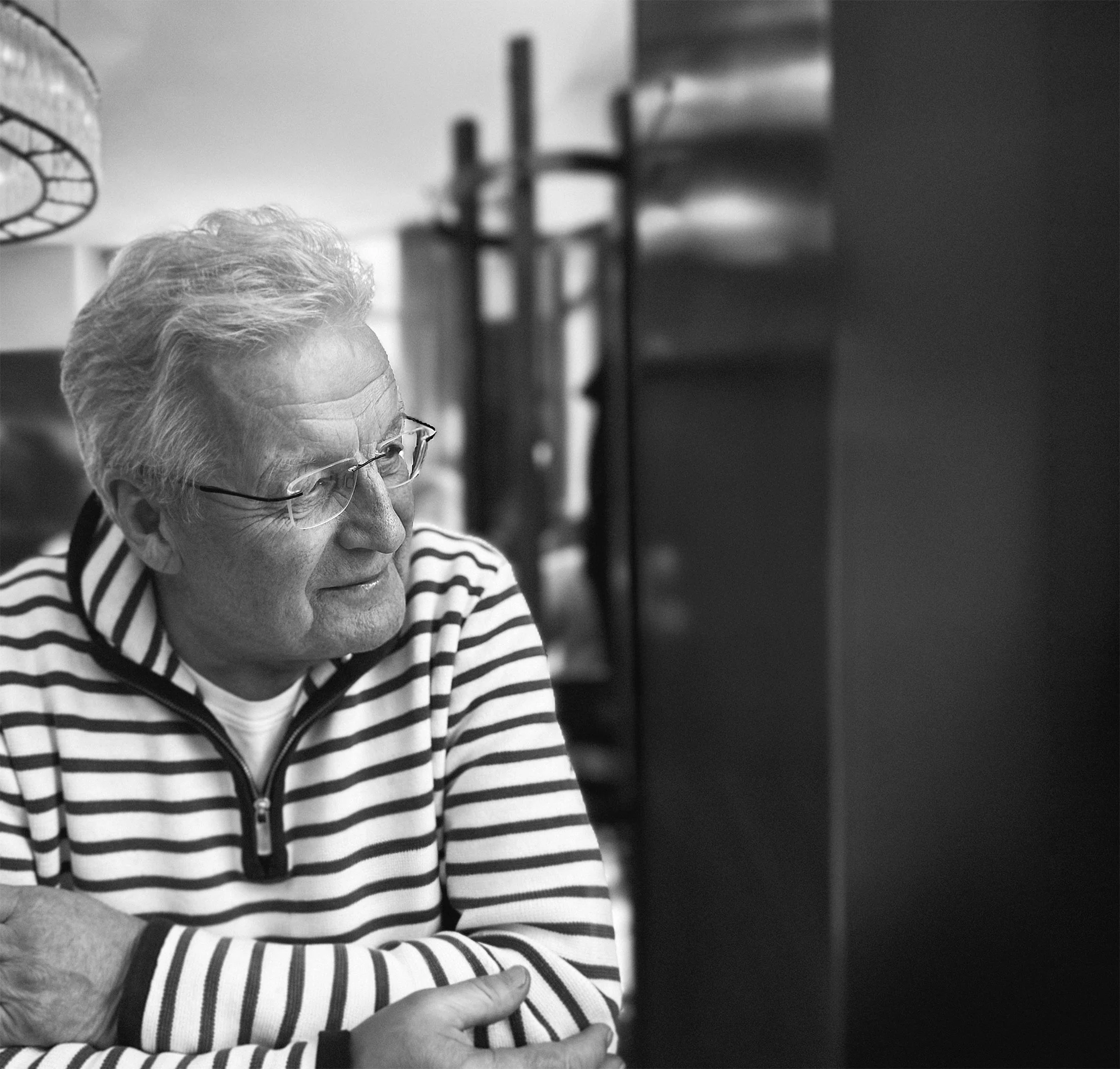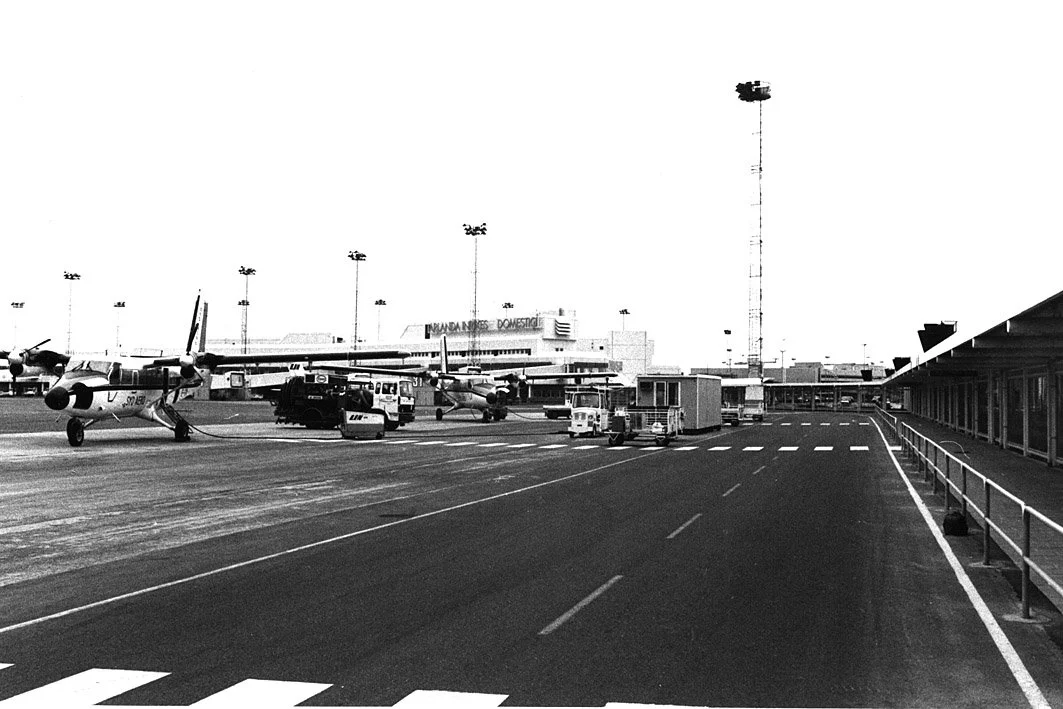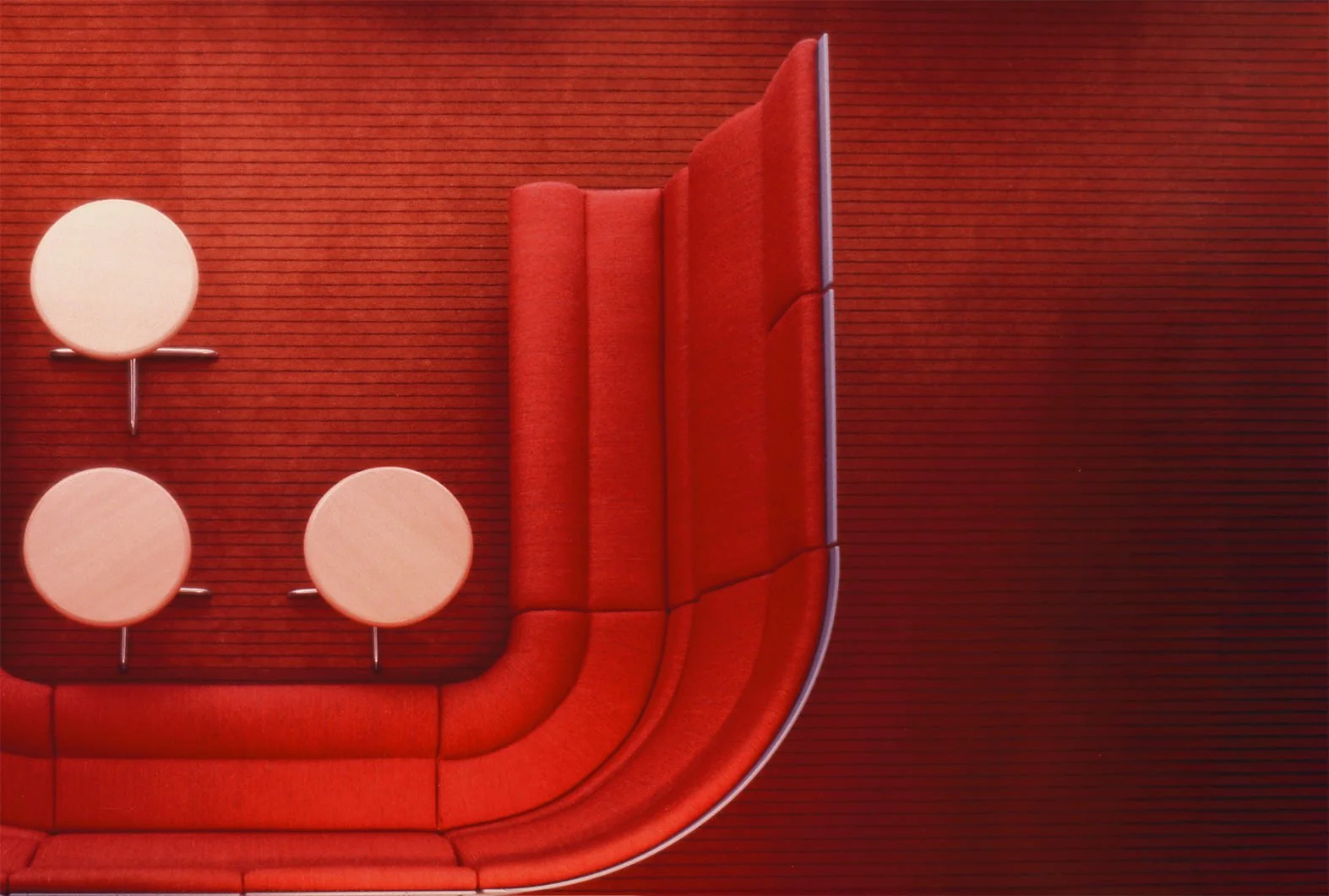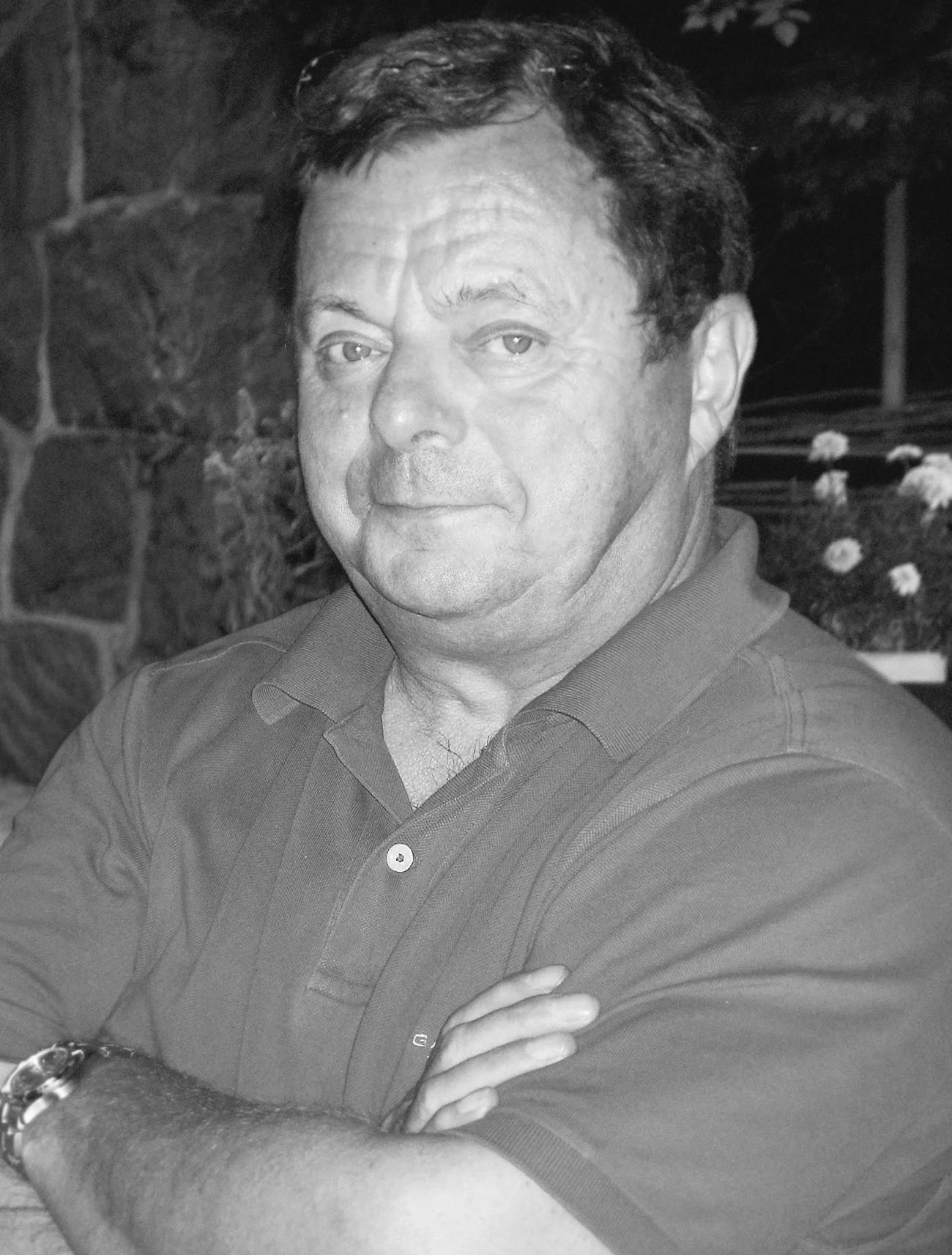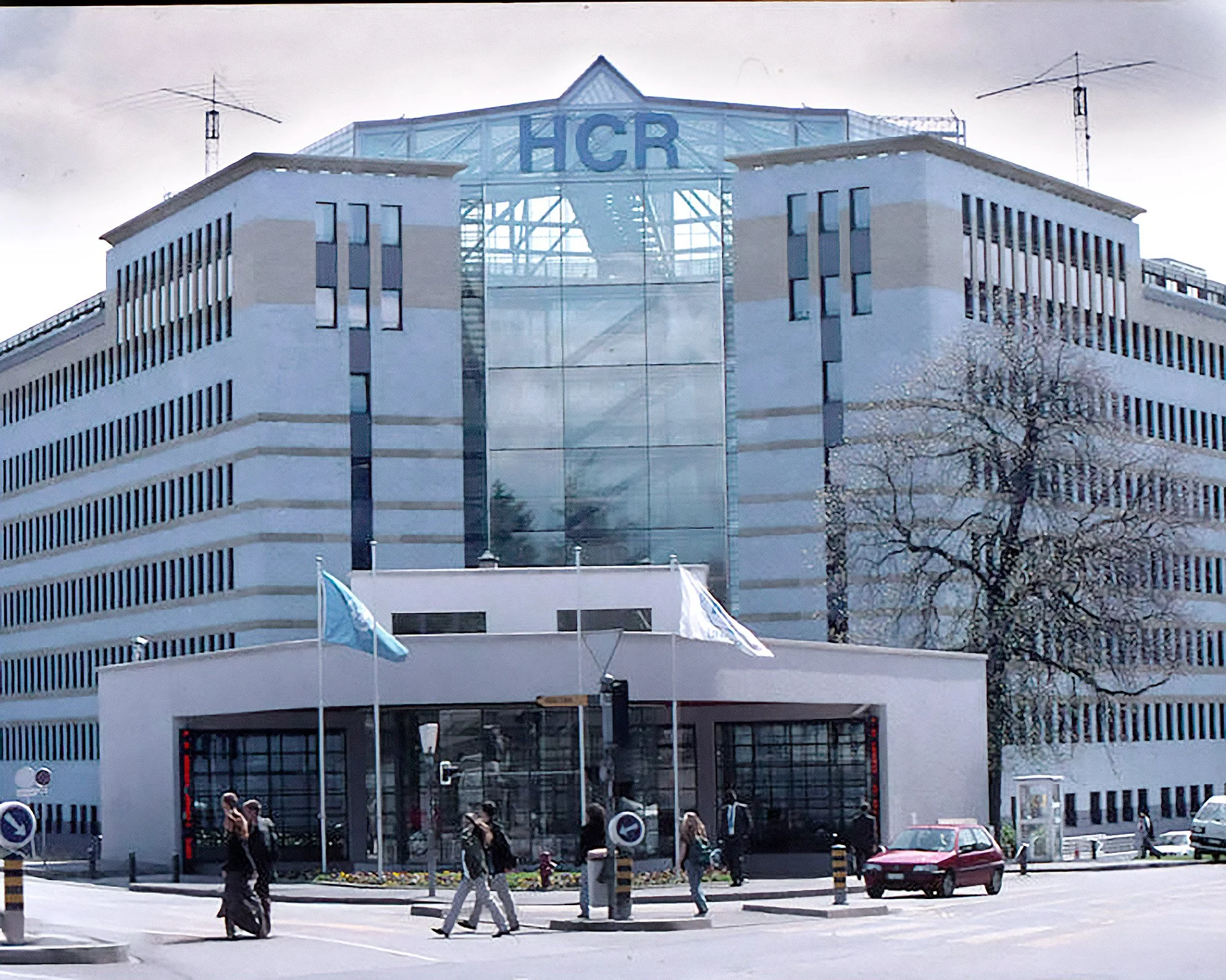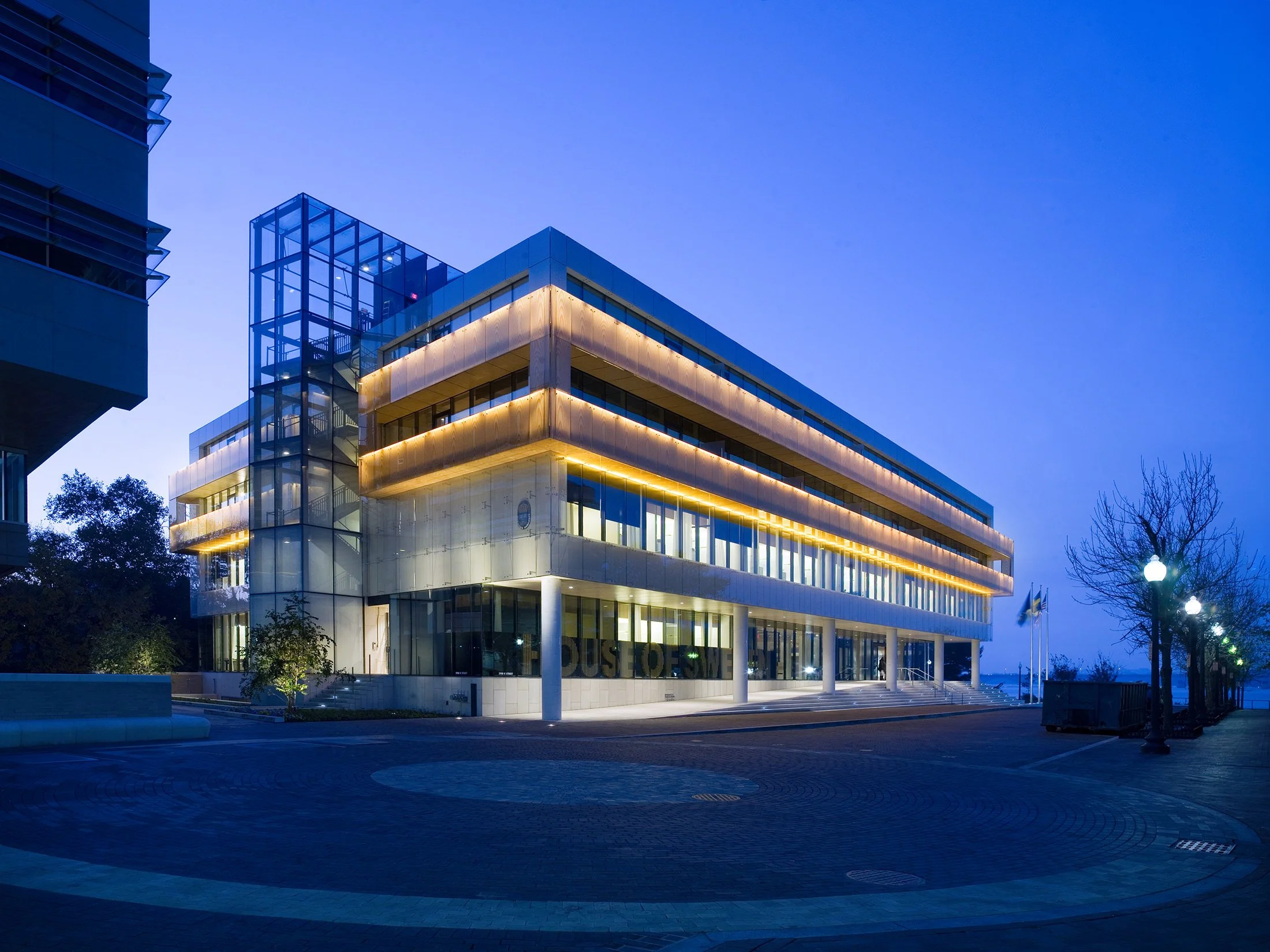Experience becomes
at value first
when it is shared
MATS CHRESSMAN AT THE SENAB OFFICE IN 2025
In a conference room at Senab's office in Stockholm, two men with warm smiles meet - Mats Chressman and Lasse Svanström, two influential Senab profiles. They began their journey with the company back in the 80s. This year marks 50 years since Senab started in 1975, and today the two look back on a time of vision, heartfelt drive, great courage and projects that have changed both people and companies for decades. And in many ways, they themselves.
SENAB 50 YEARS
It's been several years since former Senab colleagues Mats and Lasse met. When they now meet in the conference room at Regeringsgatan 66 - to talk about Mats' time at Senab - time stops for a moment. After a warm handshake and a few laughter-filled words, the memories of a long relationship, shared experiences and work that shaped both themselves and Senab are awakened. The reunion brings stories to life, and tales from the past quickly bubble to the surface.
- "The first job I got was at the Arlanda domestic terminal," Mats begins with a wry smile. "In a way, it was like being thrown straight into the thick of things. Everything was new to me and it wasn't just about delivering furniture. It was about learning to understand a place with people in constant motion.
By then, Senab had been around for eight years. But it was during the 80s and 90s that much of the company's soul was formed. Mats describes it as a time when business came through trust in relationships, presence in the business community and courage to do something new.
ARLANDA INRIKESHALLEN 1983
Photo: Svedavia/LVF
"It set the tone for how we ourselves would work in the future - close to customers, solution-focused, heart-first."
- Lasse Svanström
LASSE SVANSTRÖM
- "You can't talk about Senab without talking about relationships," Lasse adds. "We saw early on how important it was to be there. Not just to show products, but to listen, understand and inspire.
This was the case when Senab acquired the mobile phone operator Comviq as a customer. "It was really a coincidence. We got in touch and it turned out to be perfect timing. They were fast-moving, creative and wanted something new. It set the tone for how we ourselves would work in the future - close to customers, solution-focused, heart-first. We helped our customers buy furniture. That's a big difference from selling furniture, as our competitors do. That's what still makes Senab unique in the world of interior design.
SENAB 50 YEARS
Own products
In parallel with all the projects, Senab supplemented by starting to produce its own products. There were customer needs that were not available from the furniture suppliers. And when we saw such opportunities, we took them. We created the Slussen sofa, the Koppla sectional series and the Part storage unit. We designed and developed together with Swedish designers to meet needs that no one else really saw.
- "Part was one of those pieces of furniture that changed the way we looked at storage," says Mats. "It became our own, in function, thought and expression. And it gave us self-confidence. We knew we could influence, not just follow.
The Slussen sofa was another such milestone. Made in Hyltebruk's joinery, designed by Stig Lönngren at SIR, with a shape that stood out - and a comfort that made it beloved. It became one of Senab's first strong impressions in the public space.
SENAB 50 YEARS
But it was far from just about form and function. There were also great collaborations. And one of the most important keys was the relationship between Mats and Senab's then CEO Lennart Torstensson.
- Lennart was one of the most likeable people I worked with. He could read situations, see the way home, and wasn't afraid to let a deal take its time. He often shielded new ideas from internal interference until they took hold," says Mats. "If he hadn't done that - a lot would never have happened.
It was also Lennart who saw the potential of both Mats and Lasse early on - and chose to hire them.
- He was the kind of leader who put people first. He had a flair for business, but also for relationships. He made you feel that you could do more than you thought.
That courage made its way all the way to Geneva. In 1995, Senab was commissioned to furnish UNHCR's new headquarters - a project in which Mats became deeply involved.
"He was the kind of leader who put people first."
- Mats Chressman on Lennart Torstensson
UNHCR, the UN refugee agency that protects displaced people globally, was decorating its headquarters and initially they didn't even know what they needed. But we guided them and counted backwards. How many people? What are the functions? How many rooms? How many meetings? What does it require in square meters and equipment? It was a kind of architectural work but from the interior design point of view.
That was the start of Senab's international business. Geneva, Moscow, Skopje soon followed. Later also Washington and Shanghai, to name a few. Always with the same basic idea: it's about the people who will work in the premises. About understanding, translating, realizing.
In Moscow, it was about creating the stock exchange of the future in a city where business could be risky. In Skopje, hotel environments were transformed overnight, with transport through mountain passes and fog. It was life and death logistics - literally. And still the deliveries arrived. Sometimes to the sound of gunfire in the distance.
- Those were different times," says Mats. "In Moscow, our trucks had armed escorts and we had armed guards when we assembled the furniture. In Macedonia, we had to cross the border in the middle of the night to get to a meeting. But it was also an incredible feeling of being part of building something bigger.
- "There was no template for these projects," says Mats. "You had to take responsibility, think for yourself, improvise. And you quickly learned what actually matters in the end - functioning environments that people can trust.
Photo by Per Gunnar Helin
SENAB 50 YEARS
Courage and curiosity
At home, collaborations with some of the country's most renowned architects emerged. From Wingårdhs to Claesson Koivisto Rune and more. Projects ranged from the Museum of World Culture in Gothenburg to SEB, Volvo and the House of Sweden in Washington.
- We quickly learned which architects wanted to cooperate. They weren't the most prestigious ones, but those who saw the benefit in getting help. Then we could deepen the relationship. And as long as you were good, you had a customer - and a friend for life.
One particular memory that has stuck with Mats was the Clarion Hotel at Skanstull. At the time, it was Sweden's largest hotel construction project, characterized by an incredible pace and tough delivery times that required innovation and sensitivity.
- All the furniture for Clarion Skanstull was custom designed. We assembled prototypes in a factory in Macedonia and traveled there with the whole team to convince the customer of the quality. It went well - and when everything landed, it was magic.
It was with the same courage that Senab took on Volvo. At a mockup set-up in Eriksbergshallen, they proposed sheet metal instead of MDF for the screen walls - cheaper, more durable, but with the same visual expression. A creative proposal, not a sabotage. A successful move.
- We knew it was right. So we showed both options - and there was nothing to object to," says Mats. "Sometimes you have to dare to show what you believe in, even if it hurts.
And there was also the everyday, the internal. Mats highlights the role that the project coordinators came to play.
- They were invaluable. They were the ones who made everything come together. The seller brought in the business, but it was the coordinators who made sure everything happened in the right order. Without them, we would not have been able to grow as we did.
Lasse fills in:
- It was also about trust internally. We were a team where you knew who knew what, and that created a strength that customers felt. It made us fast, reliable - and human.
- "We've always taken ourselves reasonably seriously," says Lasse with a smile. There is room for both seriousness and laughter. For structure but also for impulses. And when we found that balance - then the big things happened.
SENAB 50 YEARS
This is how we grow - together
Mats and Lasse's stories show how Senab became Senab. Through every meeting, every relationship and every delivery, we have built new knowledge - and it has given us the courage to try new ways, to the next solution.
Together with project coordinators, fitters, purchasing, logistics, finance - and with architects, suppliers and partners - they have shown what teamwork means: leaning on each other, learning, and passing on knowledge. This is how Mats and Lasse have worked; they have built on the strengths of their colleagues, lifted the next generation and made the difficult a little more understandable.
They have shown how to keep the whole together without losing the detail - and how experience is most valuable when shared.
And perhaps it is there, in the borderland between respect, courage and curiosity, that Senab's true value is formed. Not just as a furniture supplier, but as a knowledge partner - through time and space.

